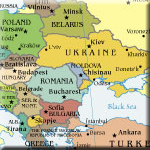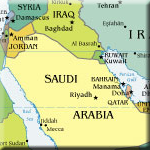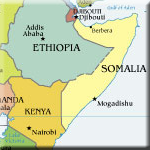




In the case of civil wars, a country’s public institutions have probably been weak before a war erupted: had they been stronger, they might have prevented the outbreak of war. The conflict will have further eroded these institutions, roughly in proportion to its duration and intensity. Consequently, a country that has endured a prolonged conflict may not have much left in terms of public institutions: ministries may be unable to fulfil even their most basic functions due to lack of funds and qualified staff, the judicial system and law enforcement may have virtually disappeared while criminal activity has largely replaced civilian commerce and industry. The currency will be close to worthless and public systems for education and health have probably collapsed. The situation may be somewhat better in public utilities for power, water and telecommunications, where maintenance and renewal have probably been interrupted by the beginning of hostilities, but where some services are still being provided because even the warring parties and criminal gangs are relying on them. Civil society has largely disappeared, while subsistence economy had a comeback, compensating in rural areas for a part of the general food shortage. Malnutrition will nevertheless be widespread, and the risk of large-scale starvation and epidemics is significant, if not properly addressed.
All what we have learned until now about public institutions in a post-conflict country is that foreign intervention is needed to secure both immediate survival of the population and protection against pillaging and murder. The chaotic situation in Afghanistan in 2003 is yet another example of how easily a hard won peace can be lost if not enough resources are devoted to internal security.
Even if the initial post-conflict humanitarian emergency has been resolved and internal security has reached an acceptable level, other problems threaten the establishment of viable public institutions. Three problems stand out: the hostility of those who fear to loose in the new order of things, the shortage of technical skills, and the budget problem.
Establishment of a new political order after an intensive violent conflict is generally desirable and frequently necessary, because the old order has disintegrated. It tends to follow one of two models, which we may call the winner-take-all model and the democratic model. The winner-take-all model, which is self-explanatory, tends to apply whenever there is a clear winner of an armed conflict, such as the Bolsheviks in Russia, the Fascists in Spain, the Vietcong in Vietnam, the Haussa-Fulani in Nigeria, the Tutsi in Rwanda, the Croats in Croatia, and so forth. While this approach flies in the face of what most people today perceive as just and fair, it generally produces a stable political system which may last half a century or longer. As a general rule, one can say that the more dictatorial the system is the better are its chances for survival in the short and medium (but not necessarily the long) term.
Whenever outside forces from a democratic country intervene during or after a violent conflict, they will try to establish a political system that respects the basic tenets of democracy and human rights. While this is of course what should be done, it is nearly always an ambitious and arduous undertaking because most post-conflict countries have little or no democratic tradition.
The democratic model in its purest form calls for the convocation of a constituent assembly, formulation and adoption of a new constitution, general elections, and replacement of whatever interim authority there is by a new, legitimate government. That is the process presently underway in Afghanistan and Iraq. It is slow, taking up to three years to complete, and needs a strong foreign presence to be effective, because establishment of a new, democratic order has at least three powerful groups of potential enemies: criminal elements, the diaspora (see below), and possibly one or several ethnic/religious groups.
The criminal mind, like most others, follows a predictable pattern: he sees the post-war confusion and lack of authority as an excellent opportunity to gain wealth and power and operates at its highest level of activity. The ordinary criminal will loot and pillage as recently seen in Baghdad and other places, but the ambitious criminal with leadership potential will set his goals much higher. He will either establish an international criminal organisation or strengthen an existing one as seen repeatedly after the last round of Balkan wars, or he will try to cloak himself in the mantle of legitimacy by pretending to defend the rights of the people, typically a regional or ethnic grouping, against an emerging new central authority.
A typical example of this latter variety are the Afghan “war lords” who unfortunately regained much of their power thanks to the help of the U.S. military who supplied them with arms and millions of dollars, hoping in vain to catch with their help Bin Laden and his associates. Post-Milosevic Serbia is another example where organised crime tried to take over the power in a country. In this case it seems the criminal leaders went a step too far by killing Prime Minister Djindjic, since most of them were put in jail, at least for a time. By putting these people in jail, Serbia has taken a decisive and necessary step to which there is no civilised alternative in establishing internal security. Afghanistan, unfortunately, seems to drift further away from this goal as time goes on.
On the subject of the so-called diaspora, that is the group of people from a given country living in a different, generally richer, country, the research of Paul Collier and his associates has turned up some interesting findings (in “Policy for Post-Conflict Societies: Reducing the Risks of Renewed Conflict”, Washington D.C., 2000). They found that ethnic diasporas finance and otherwise support ethnic conflict in their countries of origin. Countries with large diasporas are exposed to a significantly larger risk of renewed war then those without. “Diasporas are much wealthier than resident populations in the countries they have left, and so are much better able to finance conflict… Further, diasporas do not themselves suffer any of the costs of conflict, and so have a greater incentive to purchase vengeance than the resident population”. (Collier, Op. Cit.).
This behaviour of diasporas is hard to understand since their members have benefitted personally from peace and the rule of law in their host country. One wonders what could be done to rectify what is clearly a perverse pattern of behaviour and to get diasporas to make a contribution to post-conflict recovery and stability in their countries or origin. A first step would be to make them conscious of their destructive behaviour and to encourage them to contribute with their expertise and wealth to the recovery of their country of origin. Donor countries could actively encourage resident diasporas to make a visible contribution to the recovery of their country of origin, for example through the provision of matching funds to funds provided by the diaspora.
Most governments in the U.S. and Europe have not until now done anything to prevent or at least constrain the financing of war from their territory. For example, the Irish Republican Army (IRA) has been largely financed through collection of money from Irish-Americans in the U.S., and the U.S. government has never tried to prevent that, probably due mainly to the important role Irish-Americans play in American politics and elections. One may assume that the same reasoning is a cause for the inaction against the activities of other diasporas in the U.S. and other countries.
Given the difficulty for individual countries to act on this matter, Collier suggests collective action by OECD governments, similar to the recent criminalisation of bribery by OECD-based companies in developing countries. That is an ingenious suggestion and is worth pursuing, even it falls on deaf ears in the current U.S. administration and its dislike for multilateral solutions.
People with good technical skills to run a public administration are even in peacetime in short supply in most poor countries, because the quality of education is often inadequate, and many of the brightest young people look for a better future in one of the rich countries. Worse, during a prolonged conflict many competent people will have left the country if they haven’t been killed before. After the conflict, one may not find in the country a single competent person to run the ministry of finance or other key ministry. It happens sometimes in this situation that a national of the post-conflict country who has acquired the necessary skills at an international organisation such as the IMF or the World Bank agrees to abandon his rather comfortable job and to go back to his own country to help in this emergency. That of course helps, but it solves only a small part of the skills problem. Only the most senior positions can be staffed this way, if at all.
Vacant lower-level positions at the other end of the spectrum must be filled with local staff that must receive a minimum of formal and on-the-job training. Most problematic is the probably large lack of competent people at the first and second line below the top level. Three approaches have been tried to solve this problem: filling the positions temporarily with foreign technical assistants; filling them with promising local staff supported by technical assistants; and the Kosovo approach of creating a parallel administration. The first approach appears efficient in the short term if it is politically and socially accepted. However, it tends to simply postpone resolution of the underlying problem since a few years later competent local people may still not be available. This is a major drawback, big enough to discourage use of this approach except in extreme situations. The second approach, filling important positions with promising local staff aided by technical assistants, is more cumbersome and risky: some of the selected people will turn out to be less capable than hoped for, others may have priorities different from those of the administration of which they are a part, and even the best people will have to learn many things on the job until they can effectively fill their positions which can take a good deal of time. Thus, this approach is quite costly, not without risks, and initially not very efficient. Nevertheless, it is the one that promises the best results in the medium term and is most likely to produce a sustainable system.
The third one, the Kosovo approach, is an oddity that was probably born in the corridors of the U.N. in New York or the E.U. in Brussels in order to resolve the diplomatic dilemma created by the fact that, even after the war, Kosovo was to formally remain a province of Serbia, but could of course not be administered by the Serbs who were unacceptable to the Kosovo Albanians and anyway had left Kosovo for Serbia. Neither could, in the view of the diplomats, the administration be handed over to the Kosovo Albanians, because it was feared that their one and only guiding principle of administration would have been to do everything possible to achieve full independence. Thus, under the name of UNMIK (UN Mission in Kosovo), a complete administration was created from scratch, staffed exclusively with foreigners except for interpreters and drivers, with large central offices in Pristina and branch offices in twenty-one towns all over Kosovo. UNMIK had, and has, most of the attributes of a sovereign government, such as raising taxes, establishing a police force and judiciary, administering aid funds, etc; but it had also to preserve the appearance that the province remained part of Serbia. That prevented important reforms, such as the privatisation of inefficient state (Serbia) owned enterprises in industry and agriculture, thus stifling economic development.
For cosmetic reasons, the Kosovars were allowed to establish their own “government”, but were given neither tax authority nor decision-making power, which remained concentrated in UNMIK. After nearly five years in late 2003 this situation remains virtually unchanged and there is no timetable or exit strategy for UNMIK. It is also unclear when and how a competent local Kosovar administration could emerge under this system. Not surprisingly, the economy of Kosovo is not doing very well except for various highly lucrative criminal activities which according to informed sources are booming and causing significant problems to the European Union in its efforts to control illegal drugs and illegal immigration.
It is easy to understand that the Kosovo model is not something that one wants to see replicated, but there is always the risk that the priorities of international diplomacy, for what they are worth, stand in the way of post-conflict recovery. That is what is happening in Iraq where the U.S./U.K. protectorate government set up since May 2003 strongly resembles the Kosovo model.